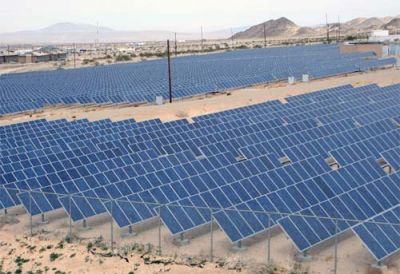Week in review: PV parity coming in 2014? and other tidbits
 It’s a figure that keeps getting updated—when solar will reach parity (cost equality) with other forms of energy. And a recent report finds that it could occur as soon as 2014. And there’s a whole host of news from last week, from expanding manufacturing to new markets opening up to new financing models that support the idea.
It’s a figure that keeps getting updated—when solar will reach parity (cost equality) with other forms of energy. And a recent report finds that it could occur as soon as 2014. And there’s a whole host of news from last week, from expanding manufacturing to new markets opening up to new financing models that support the idea.
Global Data recently issued a report finding that solar power will reach widespread parity between 2014 and 2017. The report found that largely because of the increases in manufacturing in response to demand, solar photovoltaic prices are coming into parity like a jet landing on an aircraft carrier: quick, fast and stop! Still, different markets will come into parity at different times based on what local prices of electricity are.
While many PV manufacturers are experiencing a glut in modules right now at least one company, SunPower, is expanding production. Last week, the company announced that it expanded manufacturing in France. At the new facility SunPower will produce 44 megawatts of modules annually. The plant will help SunPower meet local demand for its products, the company said.
It’s also helpful that more markets are coming into focus. Case-in-point Chile. The South American country will host The Chilean International Renewable Energy Congress, the first event put on by Green Power Conferences in the country. The conference will seek to bring solar companies and potential investors together to show off the country’s potential for solar projects, which include high-altitude deserts.
To help bring the cost of financing for solar projects down solar needs to attract more types of investors, according to a new Reznick Group report with Bloomberg New Energy Finance. And it’s happening. The report found that institutional investors are starting to see solar as a safer bet than they previously had. That’s because they’re realizing that such projects offer a safe, long-term return on investment at predictable levels. As more institutional investors like insurance companies become familiar with solar it should help reduce the price of solar financing.
Still there’s always a question of disinformation that’s clouding people’s opinions against solar and renewables as frivolous and not worth the investment. But there are those, like Dr. Bob Doppelt, who are working to educate more people about solar and climate change and why solar and renewables are important. Doppelt is supporting renewables through the Me to We campaign.
The Solar Electric Power Association released its “2011 SEPA Utility Solar Rankings” recently. The report found some surprises in terms of where the most solar power was being installed on a per capita basis. California and New Jersey still have the most solar installed overall but two Tennessee-based utilities, Blue Ridge Mountain EMC and Fayetteville Public Utilities took the number 2 and 3 spots in terms of new solar watts per customer. And in New Mexico also took a big leap up on the list of installed PV capacity, jumping 56th on 2010’s list to 10th on last year’s list.
There were worries that residential solar installations in California were nearing net-metering capacity, but a recent ruling by the California Public Utilities Commission is breathing more life into the program. The commission recently clarified rules on net-metering, allowing more residential solar is allowed to net meter. Under the new net-metering ruling utilities in California will have to source 5 percent of their aggregated customer peak demand via distributed generation. Previously utilities in the state used a number of methodologies to account for how much they were using.



